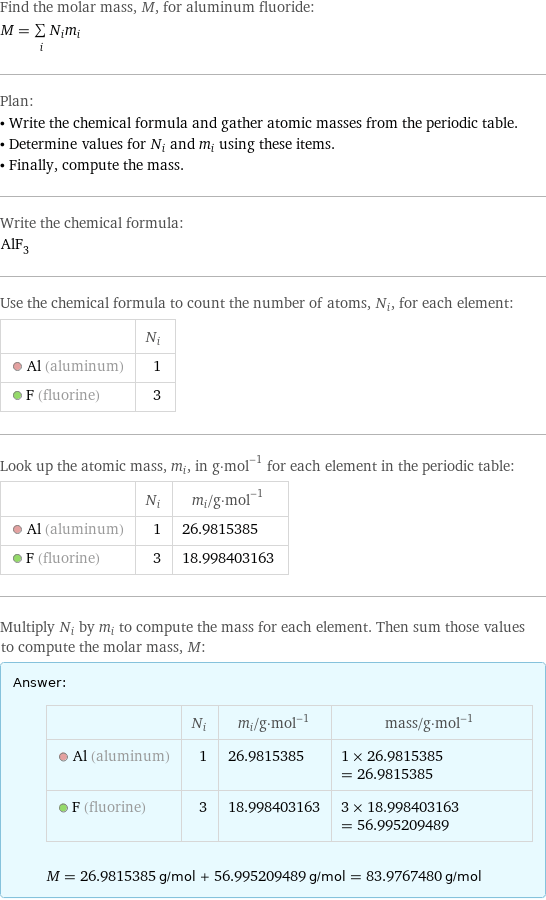Input interpretation

aluminum fluoride | molar mass
Result

Find the molar mass, M, for aluminum fluoride: M = sum _iN_im_i Plan: • Write the chemical formula and gather atomic masses from the periodic table. • Determine values for N_i and m_i using these items. • Finally, compute the mass. Write the chemical formula: AlF_3 Use the chemical formula to count the number of atoms, N_i, for each element: | N_i Al (aluminum) | 1 F (fluorine) | 3 Look up the atomic mass, m_i, in g·mol^(-1) for each element in the periodic table: | N_i | m_i/g·mol^(-1) Al (aluminum) | 1 | 26.9815385 F (fluorine) | 3 | 18.998403163 Multiply N_i by m_i to compute the mass for each element. Then sum those values to compute the molar mass, M: Answer: | | | N_i | m_i/g·mol^(-1) | mass/g·mol^(-1) Al (aluminum) | 1 | 26.9815385 | 1 × 26.9815385 = 26.9815385 F (fluorine) | 3 | 18.998403163 | 3 × 18.998403163 = 56.995209489 M = 26.9815385 g/mol + 56.995209489 g/mol = 83.9767480 g/mol
Unit conversion

0.083976748 kg/mol (kilograms per mole)
Comparisons

≈ ( 0.12 ≈ 1/9 ) × molar mass of fullerene ( ≈ 721 g/mol )

≈ 0.43 × molar mass of caffeine ( ≈ 194 g/mol )

≈ 1.4 × molar mass of sodium chloride ( ≈ 58 g/mol )
Corresponding quantities

Mass of a molecule m from m = M/N_A: | 1.4×10^-22 grams | 1.4×10^-25 kg (kilograms) | 84 u (unified atomic mass units) | 84 Da (daltons)

Relative molecular mass M_r from M_r = M_u/M: | 84